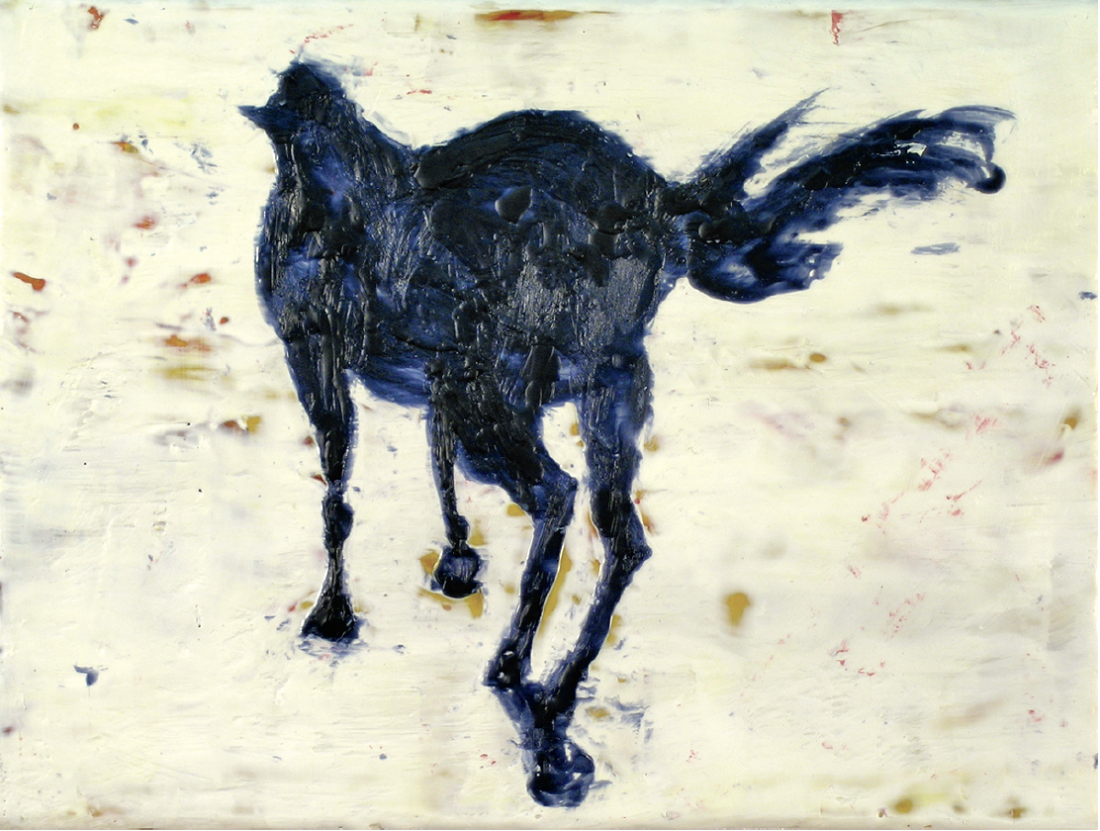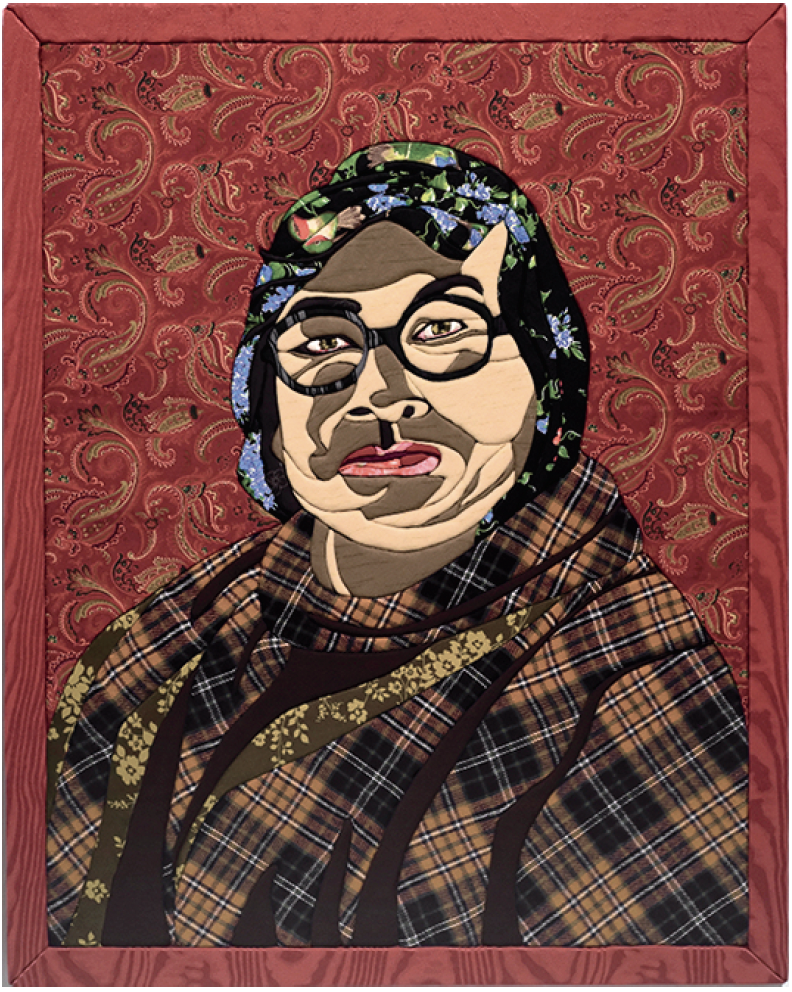“Agrarian Worlds: Colette Balcean and Tim Schouten”
I enjoy smaller, regional art galleries in the same way that I enjoy traditional hardware stores; both are curiosity shops full of wonderful things and unexpected oddities. In the case of regional art galleries, this odd-bin quality has much to do with the institution’s proximity to what are usually one and the same thing, audience and patrons, a circumstance that inevitably conspires with the survival instinct to produce exhibition policies that are broad, locally relevant and reflective of middle-ground values. Viewing art in such galleries often reminds me of a dinner party with well-brought-up strangers. Sex, politics and religion may intrude only subtly, if at all; yet, as with “Agrarian Worlds,” the exhibition shown recently at the Art Gallery of Southwestern Manitoba, given sufficient nourishment—both aesthetic and intellectual—the experience can be satisfying.
Local relevance was clearly the primary motivation for “Agrarian Worlds.” Timed to coincide with Brandon’s annual Royal Manitoba Winter Fair, the gallery drew in the fair’s general manager to work as a co-curator with one of its own staff. The stated aim of this curatorial team was to produce an exhibition that would reflect contrasting aspects of the fair and of agricultural life in general. To this end, they paired Colette Balcaen, a fabric and sometime performance artist, with painter Tim Schouten.

Tim Schouten, Untitled #94 from the series “In the Absence of Horses,” 2002–2009, encaustic on canvas, 9 x 12”. Photo: Tim Schouten. Courtesy the Art Gallery of Southwestern Manitoba.
From Balcaen, the curators selected two distinct bodies of work. The first, Shades of Red, is a large, blanket-like piece completed in 2008 representing, the artist says, the interconnectedness one feels in a community. It is constructed from machine-knitted panels progressively assembled by volunteers recruited in each of the communities in which it was exhibited. The second, the “Icons Series,” comprises wall-hung portraits of Canadian women authors and politicians complemented by podia-placed bundles of fabric samples silk-screened with excerpts from the portrait subject’s writings. For the portraits themselves, Balcaen has used something called no-sew quilting, a contemporary recreational craft medium that involves marking out a design upon a block of dense, foam-covered Styrofoam™, cutting down along the drawn lines and then tucking fabric around the resulting shapes. While it is perhaps possible to imagine an argument for no-sew quilting having a present status similar to that of conventional quilting pre-Joyce Wieland, such a parallel can’t hold; the question here is not the medium’s credentials but rather its suitability to the task at hand. Quite apart from its lacking any specific relationship to women’s practice, no-sew quilting isn’t quilting at all. Rather, it is a crude picturing medium akin more to paint-by-number than to traditional needlework. In Balcaen’s case, what results are most immediately reminiscent of either the bizarre paintings of Arcimboldo or flayed, anatomical illustrations, leaving me at a loss to understand why an artist as capable as Balcaen would choose such a blunt-instrument medium for picturing women she seeks to honour. Still, even when the outcome is less than satisfying, it is always interesting to see what results when artists experiment with such banal media, and in one or two pieces Balcaen does begin to challenge her material’s inherent limitations. The Lucy Maude Montgomery, for example, presents as a vaguely Picassoesque riff, and the Antonine Maillet does succeed in engaging the viewer with some hint of its subject’s well-known sparkle and humour. The accompanying text-imprinted fabric samples reflect Balcaen’s long-standing interest in the way both fabric and words grow and extend their meaning and purpose through repetition, and the 09extracts seem carefully chosen and appropriate.
The curators selected 100 paintings from Tim Schouten’s series, “In the Absence of Horses,” an allusion I take it, to In The Absence of the Sacred, Jerry Mander’s 1991 polemic addressing the negative effects of technology upon indigenous peoples worldwide. The reference both reflects Schouten’s understanding of his relationship to horses and successfully links the work to his “Treaty Lands” paintings, the expression of his own relationship with Canada’s indigenous peoples. In the gallery, the curators have installed “In the Absence of Horses” in rows around two walls. There are a few larger panels, perhaps a metre by a metre-and-a-half; the majority, though, are smaller. Each features some revelation of horse, sometimes full-figure, sometimes a detail of hoof or leg, sometimes no more than a gesture erupting from, or scribed into, its encaustic embedment. The variety of Schouten’s vision and technique is remarkable, the consistency, astonishing. There are so many good paintings here, some more, some less so, but no bad ones, none where there seems even the least hint of hesitation or uncertainty. This is a mature, passionately observant and fertile imagination in full stride. Amidst such an equilibrium of pleasures it may seem churlish to compare; yet, there is one piece in particular that stands out: a luminous, golden panel shading in its lower reaches to a ruddy earthiness within which a bay rolls in glorious abandon, a sole dot of raised wax, a point of brilliance, serving as a single, wild, mad eye.

Colette Balcaen, Margaret Laurence, from the Icons Series, 2007, varied fabrics (no sew quilting techniques), 2’ 1.75” x 2’ 7.5”. Photo: Colette Balcaen. Courtesy the Art Gallery of Southwestern Manitoba.
I am especially partial to horse images, for they were perhaps my first conscious experience of art. As a child, on holiday with my family in the Dordogne, I was taken through the then recently discovered Lascaux caves. In retrospect, what I brought away was a wonder at just how completely that anonymous, Neolithic painter seemed to have inhabited the creatures she rendered, and I’ve long thought that none since has painted a better horse. Now, I’m less certain.
I’ve followed Schouten’s and Balcaen’s practices for some years and am grateful to the Art Gallery of Southwestern Manitoba for the opportunity to see what they are presently doing. Both artists are worthy of attention, and while I do have reservations about some of the work, my primary concern is with the show’s prescriptive nature and the sense of disjuncture that can so easily occur when, as here, concept precedes art rather than responding to it. While in the accompanying essay, the curators do make a valiant attempt to locate congruity between the artists’ visions and theirs, in the final analysis, the work stubbornly refuses to reflect what now is surely a nostalgic and romanticized understanding of “agricultural life.” Given the regional context, however, such treatment of art is not only inevitable but, as I suggested at the beginning of this piece, likely essential to a gallery’s long-term health and survival. So, I don’t mind because, ultimately, it doesn’t matter. What does, is that the work be shown. To those open to hearing, it will always speak its true voice. ❚
“Agrarian Worlds: Colette Balcaen and Tim Schouten,” guest curated by Karen Oliver (with Amber Andersen), was exhibited at the Art Gallery of Southwestern Manitoba from March 12 to April 18, 2009.
Richard Holden is a photographer who lives in Winnipeg, Manitoba.

